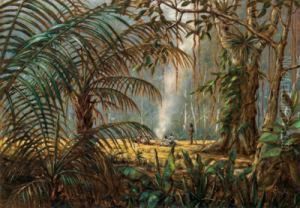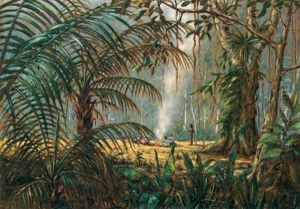Eugen Pajeken Paintings
Eugen Pajeken was a German artist and writer, born in 1864 in Bremen, Germany. His life spanned the late 19th and early 20th centuries, a period marked by significant cultural and artistic shifts. Pajeken was primarily known for his contributions to illustration and literature, particularly in the realm of children’s books and travel literature. His work reflects the broader movements of his time, including elements of Romanticism and early expressions of modernist sensibilities.
Pajeken's artistic journey commenced with his education in the arts, where he developed a distinctive style that combined detailed realism with a sense of whimsy and fantasy. This duality in his work made him a sought-after illustrator for children's stories, where he could bring to life the fantastical elements of the narrative while grounding them in a relatable reality. His illustrations often contained intricate details that invited viewers to linger, offering a depth that complemented the accompanying text.
Beyond illustration, Eugen Pajeken was an avid traveler, and his journeys significantly influenced his literary contributions. He authored several travelogues and books that captured the essence of his experiences in foreign lands. These works were not only valuable for their vivid descriptions and insights but also for the illustrations Pajeken provided, which offered readers a visual accompaniment to his narratives. His ability to convey the spirit of a place and its people was notable and added a rich layer to his travel literature.
Despite his contributions to art and literature, Eugen Pajeken remains a relatively obscure figure in the annals of art history. His death in 1940, amidst the turmoil of the Second World War, may have contributed to his fading from public memory. Nonetheless, his works continue to be of interest to collectors and scholars who are drawn to his unique blend of realism and fantasy. Pajeken's legacy lies in his ability to capture the imagination through both his visual art and his writings, offering a window into the worlds he inhabited and imagined.

